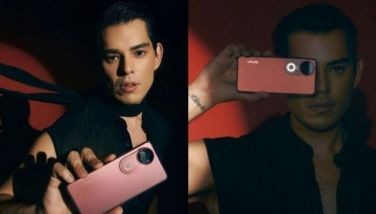A clockwork masterpiece
There were probably plenty of reasons why Martin Scorsese, at age 69, took a break from the mean streets and goodfellas to make a kid’s movie. And what a kid’s movie
Hugo
turned out to be.
First, let’s say what it’s not. In a year of lackluster kiddie fare, from lame cartoons to big-budget 3-D cartoon monstrosities like Spielberg’s The Adventures of Tin-Tin, Scorsese’s adaptation of a novel (The Invention of Hugo Cabret) is a human-sized story that contains wonders and, yes, magic. But, despite its 3-D format, not the fake Harry Potter magic we’ve come to expect from our movie outings: Hugo concerns the wonder of creation, of movies, and of dreams.
We encounter 12-year-old Hugo Cabret in medias res, slipping around the passageways and peering through the clockworks of the Gare Du Nord railway station in Paris, 1931. Within minutes, we are totally drawn into his world and his situation: every day, he winds the clocks in the station, occasionally slipping downstairs to shoplift a bit of food or other items, all the while avoiding the bloodhound instincts of Station Inspector Gustave (Sacha Baron Cohen), who has a nasty zeal for packing unaccompanied children off to the orphanage.
Asa Butterfield plays Hugo with eyes that display every emotion like a pair of stained-glass windows, but not in a Spielberg, heart-tugging way: he can also convey determination and loss, no small feat for a young kid. Left alone after his watchmaker dad (Jude Law) perishes, Hugo takes over his drunken uncle’s job at the train station, winding and maintaining the all-important clocks. All the while, he’s trying to rebuild an automaton, a rusted robot contraption that runs on watch springs and gears. The automaton sits poised at a table with fountain pen in hand; Hugo believes if he could fix it, the robot would scribble out a message from his father, and that life would then make sense.
Key to fixing the automaton is the local toyshop owner Georges Méliès (Ben Kingsley), whose gears and springs Hugo shoplifts whenever possible. But Méliès has a secret, and when he catches Hugo redhanded at pilfering, he confiscates the child’s detailed notebook (a wonderful thing, full of drawings by his father and flipbook animation) and threatens to burn it. Hugo enlists the help of Méliès’ goddaughter Isabelle (Chloe Moretz) to save the notebook, and the two embark on a friendship that leads toward solving a mystery: why her godfather Papa Georges hides a box of elaborate drawings in his room and why he has sought to erase his past since World War I.
The beauty of Scorsese’s tale is manifold. First, he uses 3-D in a way that just might point the way toward its survival beyond gimmicky deployment in every other big-budget flick these days. The movie opens on a series of watchworks, beautifully detailed and full of 3-D depth, dissolving into the clockwork spiral of arrondissements rotating outward from the Arc de Triomphe, the geographical center of Paris. We slowly descend on Paris as snow falls, and even this event gains exquisite detail in 3-D.
Along with the jaw-dropping set pieces and aerial views of the City of Lights, there are human-scale wonders: the peculiar quality of Parisian light at dusk; or the glass studio of Méliès, in which he handcrafted and painted sets for early science fiction odysseys, from the north pole to the sun.
Another plus: adults in Hugo are not treated as one-dimensional villains, the way they are in so many kid films. Sure, they’re presented as threatening entities at the beginning, but Hugo grants even the worst of them sympathy and generosity. And unlike most kid’s movies, this one doesn’t condescend to children (or parents for that matter), nor does it serve up situations with an ironic wink-wink to the parents forced to drag their brats to the cinema (as Dreamworks often does, in movies like Madagascar). No, this one tells the story through a kid’s eyes in an unabashed, unfiltered way. And it trusts the truth that a kid’s eyes will find, rather than slapping on a layer of Spielbergian sentiment. Sure, it gets a little Hollywood at the end; but the accumulated evidence of Hugo points to art, not artifice.
All this wouldn’t matter if the kid playing Hugo didn’t bring something special to his role.
A tough kid, he’s not above stealing a loaf of bread or a quart of milk when needed, and you’re reminded of Scorsese’s debt to Francois Truffaut and Robert Bresson, directors for whom thieves have honor, even dignity. His relationship with Isabelle expands in natural, unsentimental ways: they see a movie together (Harold Lloyd’s Safety Last!, which is echoed by Hugo in a later scene) and try to unravel a mystery.
What’s embedded in this unwinding nest of watchworks is a real story of a forgotten artist, Méliès, one of the pioneers of movie special effects and storytelling. A former magician, Méliès made hundreds of short films (his most famous is probably A Trip to the Moon from 1902) showcasing a variety of inventive techniques, such as puppetry, jump-cutting and color tinting individual frames in the days of black and white cinema. (We get a glimpse at how miraculous Méliès’ films were in a three-minute reel shown near the end of Hugo. This is three minutes from around 400 completed films, most of them lost.)
The movie presents its own explanation for the disappearance of Méliès, but the truth is no less sad: as his films became popular in Europe and the United States, early film producers like Thomas Edison made pirated copies and raked in huge profits by showing them without permission (yes, an early example of film piracy); Edison later formed a monopoly of film producers and distributors and enlisted Méliès to supply dozens of films per year to show in the burgeoning cinema market of the US. But the effort of cranking out so many films depleted even the inventiveness of Méliès, and his quality suffered as art turned into commerce. This itself is a pretty good metaphor for Hollywood’s decline.
At the same time, Méliès made a deal with Pathé films that effectively gave him money up-front to make films, but left the deed to his home and movie studio in the hands of the film company. When World War I effectively halted film production, Méliès was driven out of the business by his mounting debts.
Hugo tells a story of an artist’s legacy resurrected, and people are calling it Scorsese’s love letter to Hollywood. But it’s more a love letter to film and the creative spirit. As background, there’s the director’s own campaign to preserve and restore deteriorating film classics. Then there’s the story of how Scorsese helped resurrect the career of British director Michael Powell. Powell, along with Emeric Pressburger, made a series of lush, evocative British films like The Red Shoes, Black Narcissus and The 49th Parallel. Then in 1960, Powell made one on his own, Peeping Tom, about a voyeuristic killer, and suddenly no one wanted to hire him again. Scorsese, as a young filmmaker in the ‘70s, was greatly influenced by Powell, particularly The Red Shoes and Tales of Hoffmann. He learned the British director was down and out and visited him in London. He explained that a whole generation of American directors were fans of his work, and this had a rejuvenating effect on Powell late in his life. Scorsese and the older director became close friends until Powell’s death in 1990.
So with Hugo, Scorsese comes full circle, from a lifetime of paying homage to the European masters who taught him about film, to engraving a monument to the very foundation of his craft, a film that’s both entertaining, touching and surprisingly deep.
















